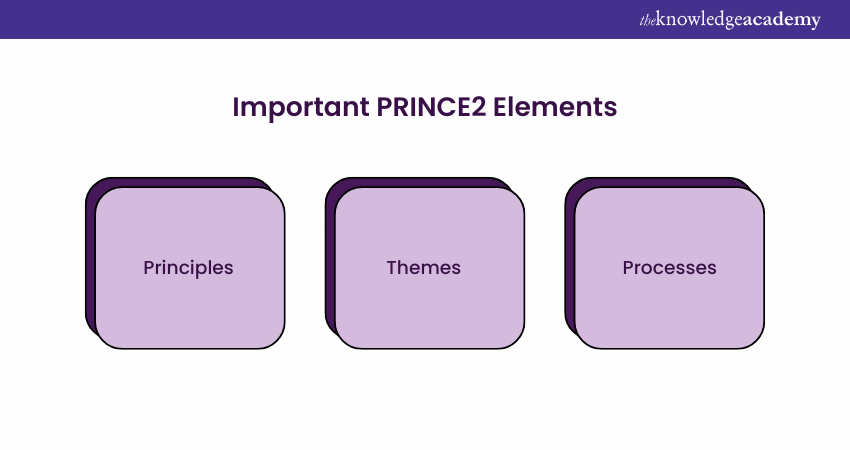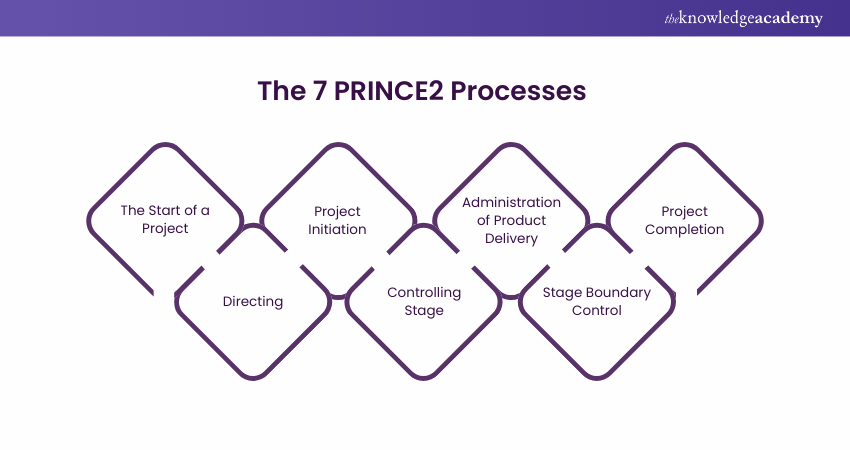We may not have the course you’re looking for. If you enquire or give us a call on +91-181-5047001 and speak to our training experts, we may still be able to help with your training requirements.
Training Outcomes Within Your Budget!
We ensure quality, budget-alignment, and timely delivery by our expert instructors.

All businesses experience transition as they expand and evolve. It is likely that eventually, every organisation will embark on a project of some kind, whether it be installing a new IT system, cutting down on supply chain waste, or establishing a new website.
Several company projects can be intricate, drawn-out processes that last for months and consume substantial amounts of valuable resources. Therefore, having a grasp of project management will aid corporate executives in maintaining the course of events and avoiding time-consuming and expensive delays.
The PRINCE2 principles are determining factors that all projects must adhere to. They resemble a type of project constitution. While it is the project manager's responsibility to gather the various individuals, skills, and resources necessary to complete the project, there will always be some specified project management technique that guides their actions and aids in keeping track of the numerous components. The PRINCE2 project management approach is one of the most well-known in the modern world and adds structure and order to the process.
This approach's seven guiding principles—which can be applied to projects of any size and in any sector—are what we'll go into greater detail about in this blog.
Table of Contents
1) What is PRINCE2?
2) Important PRINCE2 Elements
3) The 7 Principles of PRINCE2
4) Why are PRINCE2 Principles Essential?
5) The 7 Themes of PRINCE2 Methodology
6) The 7 PRINCE2 Processes
7) Conclusion
What is PRINCE2?
The PRINCE2 project management approach is primarily employed in the UK, Australia, and European nations. Projects IN Controlled Environments, often known as "PRINCE2," is a project management methodology that emphasises managing resources and risks by breaking down large projects into minor phases, defining clear roles & responsibilities, and utilising seven processes to accomplish the project life cycle.
Now that we understand what PRINCE2 is, let's take a quick look at its essential elements.
Important PRINCE2 Elements
The project management methodology is based on the PRINCE2 principles, themes, and processes. Here is a quick overview of PRINCE2 elements-

1) Principles
The guiding concepts of this project management methodology are the PRINCE2 principles. They stand for the total commitment to specific working, project planning, and collaborative techniques. Nothing of the foundational PRINCE2 project management principles should ever be changed or undermined.
2) Themes
Themes of prince2 focus on specific issues that need to be taken into account over the course of a project.
3) Processes
The degree of PRINCE2 processes is higher than that of work assignments and activities. The main objectives of the processes are finding out what must be done, who is responsible, and which team members will complete the work.
Interested to know how to tailor PRINCE2 Elements in workplace scenarios? Check out our PRINCE2 Practitioner Course now!
The 7 Principles of PRINCE2
The PRINCE2 key principles that form the foundation of the PRINCE2 methodology are as follows-
1) Continued Business Justification- Making viable business decisions for your project requires ongoing business justification. Traditionally, a business case is used to demonstrate your reason. This indicates that the project's rationale for starting was legitimate and should remain so over its entire life, notwithstanding the possibility of change. If you can demonstrate continual justification for completing your project, your financial stakeholders will be willing to support you. Additionally, if you can convincingly provide compelling reasons for completing the project, your sponsor and government will also help you.
Uncertain goals, poor alignment with company strategy, or duplication with other initiatives hinder an unexpectedly high number of projects. Please update your justification frequently if you request extra funding or resources. Create compelling and reasonable reasons for each point in your business case. Your chances of obtaining that investment or the additional resources will increase as a consequence.
If your justification subsides or fades, you must change course or abandon the effort. This will save you from pouring additional time and money into unsuccessful endeavours.
2) Learn from Experience- Even project managers err sometimes. It would help if you kept learning from these errors as you advance. Learning from prior failures and triumphs is a necessity of PRINCE2 projects since it is an effective tool for risk assessment.
In turn, you should steer clear of future similar errors. Keep track of your experience in a learning journal. You must also draw lessons from past projects' learning logs and experiences. This PRINCE2 principle will, therefore, constantly assist you in enhancing your performance.
3) Defined Roles and Responsibilities- The roles and responsibilities must be established from the beginning of the project in a clear structure. Depending on the size and configuration of your project, each individual may play many roles or share a position as defined by PRINCE2.
The organisational hierarchy of a project can be divided into four levels: corporate, project board, project manager, and team level. A more precise knowledge of duties will guarantee that information reaches the appropriate parties, that there are no gaps or repetitions in the ongoing project activity, and that everyone is aware of their respective reporting lines. A well-designed hierarchy also establishes the foundation for efficient resource utilisation.
4) Manage by Stages- A project should be divided into at least two stages for better administration and control, according to PRINCE2 best practice guidelines. It is believed that when determining the number of phases, risks and expenses must be considered. It is a traditional project management method of operation. Divide your initiatives into stages and oversee each one separately. There are various clearly defined stages in the PRINCE2 methodology that you ought to incorporate. A project phase and a management stage are similar. After each management stage, the project must be evaluated for its current status, the status of its plan, its risks, and its adherence to the project's business justification.
The project manager (PM) can keep track of overall project performance and spot scope range and slip timeframes to take appropriate mitigation action by maintaining this high-level overview.
5) Manage by Exception- The concept of management by exception is one of the vital guiding concepts of the PRINCE2 project methodology (and a fundamental premise in any flexible approach to project management). According to this, senior management should only get involved when necessary.
Everyone can carry out their tasks without constant interruption and the inevitable "micromanagement" that comes with poorly designed projects if everyone on the project team is aware of what they are doing and the project is carefully planned.
The project manager, the project steering committee, and company-level stakeholders are all affected. You can focus and guide your attention as a project manager using this PRINCE2 principle. Attention enables you to concentrate on the areas that most need it. Your ability to deliver the project on schedule, within budget, and with the desired quality will be aided by this.
Learn more about PRINCE2. Register for our PRINCE2 Foundation and Practitioner Course today!
6) Focus on Products- In project management, when we refer to a "product," we mean the finished product rather than the actual work. Project management should be product-focused rather than work-focused in light of this.
The project should be centred on delivering the product by well-specified quality criteria. Products should be clearly outlined by their purpose, quality attributes, format, and composition. A project manager can establish workflow and process backwards from the end value by concentrating on the result.
Product specifications, quality standards, and other criteria are crucial to obtaining effective outcomes since PRINCE2 promotes an output-oriented strategy for a project.
7) Tailor to Suit the Project Environment- It is not recommended to use the PRINCE2 approach in a predetermined manner. It should be modified better to suit the nature and scope of the project.
For instance, you might merge various documents into smaller, quicker projects. You could substitute verbal or email updates for written reports. Alternatively, you could wish to give the future more flexibility for more agile projects (where you are unsure of the precise answer or solution). Different projects have various contexts and scopes; thus, you must be able to modify your process to fit each project's unique requirements.
Although this principle emphasises providing you with the flexibility to adapt to the project, you still must adhere to the broad principles. These are rather stringent requirements for the PRINCE2 methodology, especially the many project stages and procedures you must follow.
Why are PRINCE2 Principles Essential?
The basic idea of the PRINCE2 key principles is to enable project managers to simplify their lives. Sometimes initiatives might spiral out of control, exceeding their initial budget, timeline, or scope expectations.
The primary purpose of the PRINCE2 principles is to prevent projects from getting out of control and maintain control, and create a structure that makes projects easier to manage. However, knowing there is a system to turn to in a crisis is helpful.
The PRINCE2 principles are fundamentally-
1) Universal- The PRINCE2 guidelines are standardised and applicable everywhere. Theoretically, you could use them for projects in any industry of all sizes and scopes. As a result, they constitute an excellent reference guide for project managers who frequently switch between different sectors and industries.
2) Self-validating- By simply utilising them as a reference and being honest with yourself about your job as a project manager, you can quickly determine whether you are adhering to the PRINCE2 principles. Without outside assistance or opinions, self-validation can help you better manage your business.
3) Empowering- In brief, the PRINCE2 project management principles are made to give you more control over your situation. They should, in turn, offer you the assurance and fortitude to make wise choices that will impact your projects. Although you may occasionally need counsel from your top leaders, the PRINCE2 methodology can help you feel more confident that your options are sound and consistent with these established principles.
Increase your productivity and make the most of our resources. Check out our PRINCE2 Training Courses Today!
The 7 Themes of PRINCE2 Methodology
It outlines the project management components that must be continuously and concurrently handled. Seven themes explain the special treatment PRINCE2 mandates for distinct project management disciplines. They are put up at the beginning of the project and kept under observation all the way through. Projects that consistently handle these issues are supported and on track. The themes consist of the following-
A) Business Case Theme
B) Organisation Theme
C) Quality Theme
D) Plans Theme
E) Risk Theme
F) Change Theme
G) Progress Theme
The 7 PRINCE2 Processes

1) The Start of a Project- A request is made to start a new project—a project mandate. The organisation's capacity to carry out this mandate is assessed. If the proposal is approved, the company will give a more detailed project brief.
2) Directing- Project briefs are examined and evaluated by the project board. They will decide how to organise and execute the approved initiatives.
3) Project Initiation- The project manager creates the initial project paperwork, which includes a plan and a staging ground for essential goals, including cost, benefits, risk, quality, and scope. The board decides whether everyone agrees with this documentation.
4) Controlling Stage- The project manager hands off the project to the remainder of the team after it has been divided into more minor work phases. The project manager keeps an eye on each phase and will step in when necessary. The team manager oversees the everyday tasks.
5) Administration of Product Delivery- The deliverables must meet PRINCE2's quality standards before being passed to the client. The project manager is in charge of this. The board then determines whether the results are satisfactory or require changes.
6) Stage Boundary Control- The board and project manager evaluate each project stage to ensure that everything is going according to plan and that all requirements are being met. The board may make decisions regarding the project's future. Every time a review is conducted, the project manager must record the lessons learned for future use.
7) Project Completion- When the work on the project is finished, the project manager must properly wrap things out.
Conclusion
The PRINCE2 principles, themes and processes ensure that projects are delivered successfully, and that services are provided on schedule without sacrificing quality. Elevate your career by learning more about the PRINCE2 methodology and honing your project management abilities with PRINCE2 certification training.
Are you looking forward to gaining in-depth knowledge about Project Management methodologies? Check out our PRINCE2 Foundation Course today!
Frequently Asked Questions

The PRINCE2 principles are foundational to the PRINCE2 methodology, guiding its framework with best practices for effective project management. These principles ensure consistency and adaptability in project execution, aligning the framework’s processes, themes, and techniques with proven, flexible standards.

PRINCE2 principles promote successful project delivery by emphasising clear roles, ongoing business justification, and learning from experience. This structure enables teams to maintain control, address risks proactively, and adapt as needed, ensuring that projects stay aligned with business goals and deliver measurable value.

The Knowledge Academy takes global learning to new heights, offering over 30,000 online courses across 490+ locations in 220 countries. This expansive reach ensures accessibility and convenience for learners worldwide.
Alongside our diverse Online Course Catalogue, encompassing 19 major categories, we go the extra mile by providing a plethora of free educational Online Resources like News updates, Blogs, videos, webinars, and interview questions. Tailoring learning experiences further, professionals can maximise value with customisable Course Bundles of TKA.

The Knowledge Academy’s Knowledge Pass, a prepaid voucher, adds another layer of flexibility, allowing course bookings over a 12-month period. Join us on a journey where education knows no bounds.

The Knowledge Academy offers various PRINCE2 Certifications, including the PRINCE2® Foundation & Practitioner Course and PRINCE2 Agile® Practitioner Course. These courses cater to different skill levels, providing comprehensive insights into PRINCE2 Processes.
Our Project Management Blogs cover a range of topics related to PRINCE2®, offering valuable resources, best practices, and industry insights. Whether you are a beginner or looking to advance your Project Management skills, The Knowledge Academy's diverse courses and informative blogs have got you covered.
Upcoming Project Management Resources Batches & Dates
Date
 PRINCE2® Foundation & Practitioner Training Course
PRINCE2® Foundation & Practitioner Training Course
Thu 1st Jan 1970







 Top Rated Course
Top Rated Course



 If you wish to make any changes to your course, please
If you wish to make any changes to your course, please


